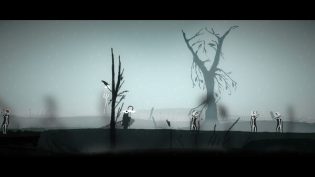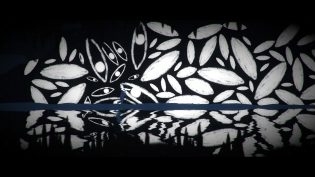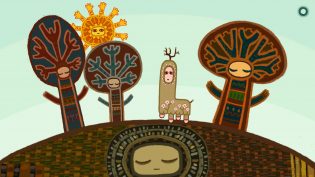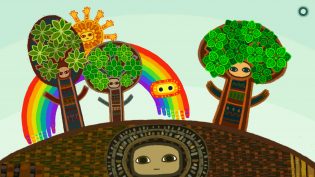It’s always a joy to see games tackling on some themes or ideas that haven’t really been explored much, and especially unexpected when teams making said games are based in Russia. But that’s the case with the two little but very intriguing titles The Mooseman and It’s Spring Again.
The Mooseman is a rather curious adventure title, with its main appeal being that it’s based on finno-ugric folk tales and mythology (mainly drawing inspiration from history of Komi peoples currently living in Perm Krai). It’s most certainly a unique theme for the game, very strongly supported by a striking visual style and fantastic folk choir singing. This might be somewhat reminiscent of Year Walk or even Superbrothers: Sword & Sworcery EP, but unlike these two, it’s not trying to use any kind of framing story, nor tries to have a horror focus. Instead, this game is somewhat reminiscent of Another World/Out of This World, except with mainly slow walking with rare action-ish scenes, instead of cinematic platforming.
And that comparison isn’t there just as a compliment. Just as terrible a lot of Another World parts are, full of bizarre design decisions and horribly unnecessary sections, same goes for The Mooseman. There are “puzzles” that are more tedious than puzzling, there are action- and stealth-lite bits that are absolutely atrocious and the weird choice to make historic artefacts collectibles (despite them being a very vital part of the whole experience), only means that in 90% of all screens you need to go left first, to find a “hidden” collectible immediately off the screen. Yet, despite these glaring and annoying issues (and a few rather bad cases of sound mixing), the theme and the style will most likely win you over. And since it’s a very short game as well, it is less likely you will get bored or annoyed of its shortcomings.
While It’s Spring Again is a little interactive play for children, it is an extremely enjoyable experience for all ages. It takes under 10 minutes to complete (for a grown up at least), has nicely made narration describing the changing of seasons and super cute art style. It also loops and can be set to play itself. In my personal opinion, the Russian language narration feels nicer, having that slightly amateurish theater feel to it and warmth that is lacking in a more “by the book voice acting for children” narration that English version has, but it’s still really nice (and the narration can also be completely turned off). As a fan of “interactive virtual toy” approach to game design, that isn’t found as often as I like, this was a joy to experience. And given the price point (and bonus 20 minute theater play for kids included with the Collector’s edition), this is very much worth checking out.







